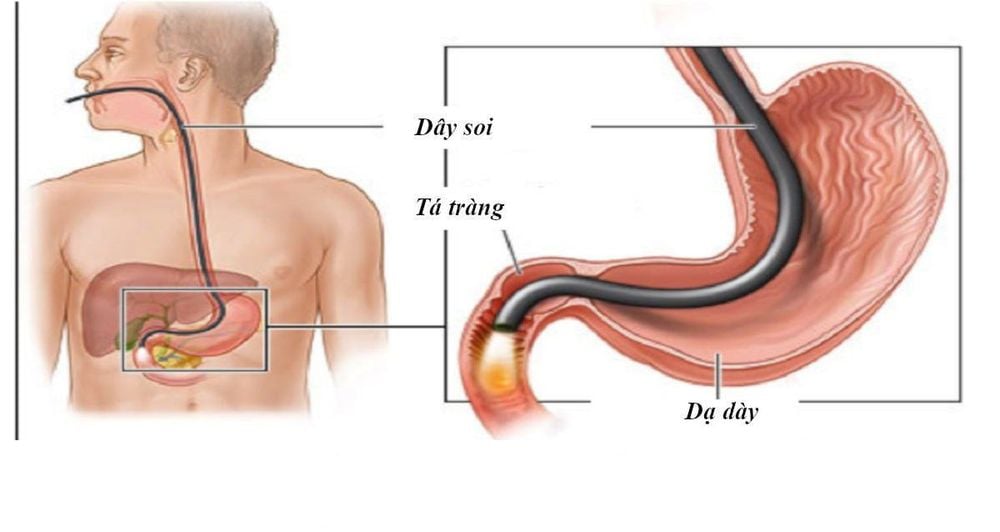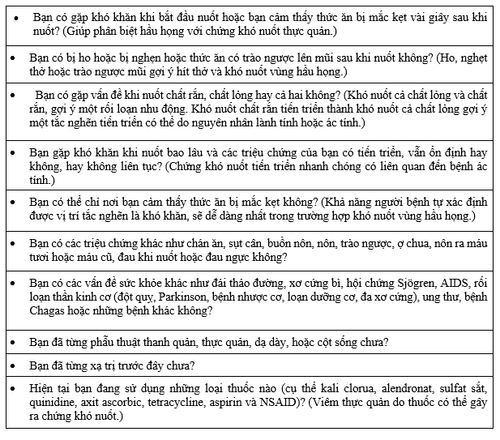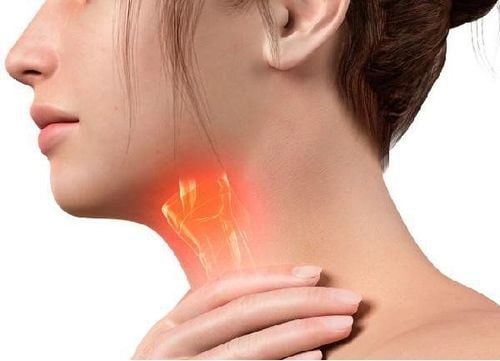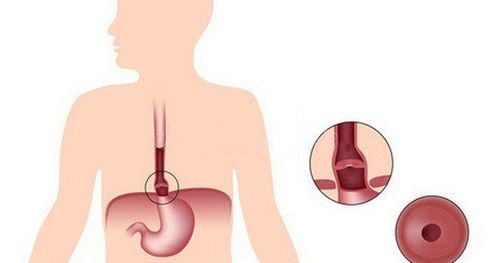This is an automatically translated article.
Posted by MSc. Doctor Ta Que Phuong - Department of Gastroenterology - Endoscopy, Vinmec Times City International Hospital.
Dysphagia is a symptom that requires rapid evaluation to determine the exact cause and initiate appropriate therapy. It may be due to a structural or peristaltic abnormality in the passage of food from the oral cavity to the stomach.
1. Definition
The terms dysphagia, painful swallowing, choking sensation, entanglement are defined as follows:
● Dysphagia is a subjective sensation of difficulty or abnormal swallowing.
Swallowing pain: Pain when swallowing.
● Feeling of choking, entanglement: Always have the feeling that there is a foreign object or something stuck in the throat.
2. Acute dysphagia

The acute onset of an inability to swallow solids and/or liquids, including secretions, suggests a foreign body in the esophagus and requires immediate attention. Food entrapment is the most common cause of acute dysphagia in adults.
Clinical Manifestations: Patients often develop symptoms after eating meat (most commonly beef, chicken, and turkey), which completely obstructs the lumen of the esophagus, leading to spitting up saliva. Management: Initially, intravenous glucagon can be used to relax the lower esophageal sphincter and help push food through. The mass of food can also be removed during esophagogastroduodenoscopy using foreign body grabbers (which can be lumps or pieces, depending on the consistency of the food), or it can be removed. can be gently pushed into the stomach by the endoscope.
3. Evaluation of non-acute dysphagia
3.1 Distinguishing oropharyngeal dysphagia from esophageal dysphagia The first step in evaluating a patient with non-acute dysphagia is to determine whether symptoms are due to oropharyngeal or esophageal dysphagia based on on the patient's responses to the questions in the following table

Oropharyngeal dysphagia is characterized by the following features:
The patient has difficulty swallowing at the beginning of swallowing. The patient may point to the oropharynx where Swallowing symptoms may be accompanied by nasopharyngeal reflux, aspiration, and a sensation of residual food in the pharynx. Oral dysfunction can lead to drooling, food spillage, and digestive upset. Oropharyngeal dysfunction can lead to coughing or choking with food and dyspnea. Esophageal dysphagia : Patients with esophageal dysphagia typically have the following symptoms:
Difficulty swallowing seconds after swallowing begins Sensation that food and/or liquids are being obstructed in their passage from upper esophagus to stomach

3.2. Characterization of symptoms Dysphagia is characterized by the type of food causing the symptoms, time course (i.e. progressive or intermittent), severity and accompanying symptoms:
Foods are solid, liquid or both? It is important to identify the foods that are causing the symptoms (i.e. solid foods, liquids, or both). Difficulty swallowing both solids and liquids at the onset of symptoms may be due to disturbances in esophageal motility. Dysphagia usually occurs only when the lumen of the esophagus is narrowed to 13 mm or less.
Progressive or phased? Progressive dysphagia, beginning with dysphagia on solids, followed by dysphagia on liquids, is usually due to an obstructive lesion or narrowing of the gastrointestinal tract. Symptoms of benign narrowing of the gastrointestinal tract will progress slowly and gradually, while those due to malignancy develop more rapidly.
Episodic dysphagia may involve the lower esophageal ring or membrane. Patients with motility disorders may also present with progressive dysphagia (eg, dysphagia) or may present with intermittent or intermittent dysphagia (eg, distal esophageal spasm). ). Psychological factors can influence the manifestation and severity of dysphagia symptoms.

3.3. Related Symptoms Related symptoms or findings may help narrow the differential diagnosis. These may include:
Heartburn Weight loss Vomiting blood, vomiting food Anemia Respiratory symptoms From the initial assessment can guide the diagnosis according to the progression of the new symptoms can be directed related diseases as well as exploratory tests to confirm the diagnosis to find the cause for appropriate treatment.
Vinmec International General Hospital is one of the hospitals that not only ensures professional quality with a team of leading medical doctors, a system of modern equipment and technology. The hospital provides comprehensive and professional medical examination, consultation and treatment services, with a civilized, polite, safe and sterile medical examination and treatment space.
Please dial HOTLINE for more information or register for an appointment HERE. Download MyVinmec app to make appointments faster and to manage your bookings easily.














